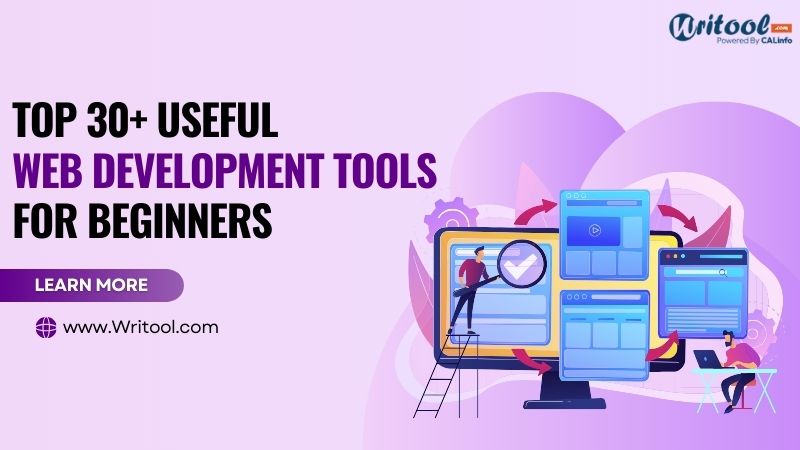In today’s fast-paced digital world, web development has become a cornerstone of innovation. Whether you’re looking to build your first website or scale a complex web application, mastering the best languages for web development is essential. With so many choices available, how can you determine which ones are the best? What if we told you that learning the right languages could drastically boost your web development career, opening doors to endless opportunities?
In this blog, we will delve into the 11 best languages for web development that you can learn and explore. From the essential HTML to the dynamic capabilities of JavaScript and Python, we provide you with languages that are not only robust but also highly adaptable, enabling you to handle a diverse array of web development projects.
Whether you’re a beginner or an experienced developer, the languages we discuss here will not only help you level up your skills but also keep you ahead in the constantly evolving world of web development. So, let’s dive in and discover the languages that could reshape your web development journey, keeping you competitive and motivated in this fast-paced field!
What is Web Development?
Web development refers to the process of building, designing, and maintaining websites or web applications. It encompasses everything from creating a simple static page to complex, interactive web platforms.
Web development involves various technologies and programming languages that help create both the front end (what users see and interact with) and the back end (the server-side functions that power the site).
Web developers use various coding languages, frameworks, and tools to bring ideas to life and ensure websites are functional, user-friendly, and accessible across different devices and platforms. This field is ever-evolving, driven by innovation and user demand.
11 Best Languages For Web Development To Learn
1. HTML (HyperText Markup Language)
HTML, the backbone of web development, is a standard markup language that’s surprisingly simple to learn. It’s used to create the structure of web pages, and its simplicity will reassure you that you’re on the right track in your web development journey.
Why Learn HTML? HTML is essential for building static web pages and understanding how content is displayed on browsers.
Usage: You’ll use HTML to define elements like headings, paragraphs, images, and links.
Pros: It’s simple to learn and indispensable for all web development projects.
Cons: HTML alone is insufficient for interactive or dynamic pages, requiring CSS and JavaScript for full functionality.
2. CSS (Cascading Style Sheets)
CSS works alongside HTML to add style and presentation to web pages.
Why Learn CSS? CSS allows developers to enhance the visual appeal of websites by controlling layout, fonts, colors, and more.
Usage: It’s used for page layout, grid systems, responsive design, and typography.
Pros: Offers high flexibility and customizability.
Cons: Mastery of CSS may require knowledge of frameworks like Bootstrap to achieve advanced designs.
3. JavaScript
JavaScript is the leading client-side scripting language. It is responsible for making websites interactive and is considered one of the best languages for web development.
Why Learn JavaScript? It is the go-to language for front-end development and dynamic functionality.
Usage: Commonly used for animations, event handling, and form validation.
Pros: Versatile and supported by all major browsers.
Cons: It can get tricky for large-scale projects, requiring careful structure and organization.
4. PHP (Hypertext Preprocessor)
PHP is a widely used server-side language essential for dynamic web pages.
Why Learn PHP? It powers platforms like WordPress and is essential for backend development.
Usage: Great for building dynamic content and connecting to databases.
Pros: Open-source, easy to deploy, and offers robust community support.
Cons: Slower performance compared to languages like Node.js.
5. Python
Python is known for its readability and versatility.
Why Learn Python? Its easy syntax makes it beginner-friendly while also powerful for back-end development.
Usage: Frameworks like Django and Flask make Python an excellent choice for web app development.
Pros: Clean syntax, large ecosystem, and scalable.
Cons: Can be slower than JavaScript or PHP for certain web tasks.
6. Ruby
Ruby is renowned for its simplicity, with Ruby on Rails being a popular web development framework.
Why Learn Ruby? Ruby emphasizes productivity and simplicity, which is perfect for rapid development.
Usage: Building full-stack applications and prototypes quickly.
Pros: Elegant syntax and great community support.
Cons: Performance can be an issue for larger, more complex applications.
7. TypeScript
TypeScript builds on JavaScript by incorporating static typing into the language.
Why Learn TypeScript? It enhances JavaScript’s scalability and improves code quality.
Usage: Ideal for large-scale applications, especially in frameworks like Angular.
Pros: Better for managing complex codebases.
Cons: It has a steeper learning curve if you’re already familiar with JavaScript.
8. Java
Java is regarded as one of the best languages for web development. It’s a robust, object-oriented language that powers large-scale, enterprise-level web applications.
Why Learn Java? It’s ideal for building secure and scalable web applications.
Usage: Often used for backend development in large, complex systems.
Pros: Platform-independent and highly secure.
Cons: Requires a more complex setup and syntax than other languages.
9. SQL (Structured Query Language)
SQL is crucial for handling and querying relational databases.
Why Learn SQL? Understanding SQL is key to interacting with databases, an essential part of backend development.
Usage: Creating, modifying, and querying databases.
Pros: Integrates well with most web frameworks and is essential for backend development.
Cons: Its use is limited to database-related tasks.
10. Go (Golang)
Go is a statically typed language developed by Google, known for its speed.
Why Learn Go? It’s ideal for creating high-performance web applications and microservices.
Usage: Great for backend development and handling real-time data.
Pros: Fast and easy to deploy.
Cons: Smaller ecosystem compared to older languages like PHP or Python.
11. Node.js
Node.js enables developers to utilize JavaScript for server-side programming.
Why Learn Node.js? It’s perfect for building real-time web apps and scalable backend services.
Usage: Real-time applications like chat applications or live streaming.
Pros: High performance and vast community support.
Cons: Callback complexity can be challenging for beginners.
How to Choose the Best Language For Web Development?
Mentioned below are the key points to consider while choosing one of the best languages for web development:-
Determine the Project Type: Decide whether you’re working on front-end, back-end, or full-stack development. Front-end requires languages like HTML, CSS, and JavaScript, while back end involves languages like Python, PHP, or Node.js.
Consider Your Goals: Choose languages based on the functionality you need. JavaScript and its frameworks (like React or Angular) are essential for dynamic, interactive websites. For server-side work, languages like Python and PHP are popular choices.
Scalability & Performance: Evaluate a language’s scalability. Some languages, like Node.js, are excellent for real-time applications, while others, like Java and Ruby, are better for large-scale enterprise applications.
Community Support & Ecosystem: Opt for languages with strong community support and extensive libraries or frameworks. It will speed up troubleshooting and development.
Personal Preferences & Expertise: Consider languages that align with your interests and existing knowledge. Try out various web development tools to discover which ones suit you the most.
Project Requirements: Assess your project’s technical requirements. Some languages are better suited for specific use cases, such as Python for data-heavy applications or PHP for content management systems like WordPress.
Conclusion
In conclusion, mastering the right programming languages is the key to becoming a successful web developer. The 11 best languages for web development we’ve explored in this blog offer diverse tools and opportunities for building everything from dynamic websites to complex web applications. Depending on your goals and the projects you want to work on, selecting the right language is essential. Stay updated with the latest trends in web development, practice regularly, and explore beginner projects to enhance your skills. Don’t forget to keep experimenting, learning, and growing as a developer!
FAQs
Can I build a full-stack web application with just JavaScript?
Yes, using Node.js for the backend and JavaScript for the frontend, you can build a full-stack application. Many modern frameworks like React, Angular, and Vue also support JavaScript in both environments.
Should I learn TypeScript or JavaScript first?
It’s recommended to start with JavaScript, as it’s the foundation. Once you’re comfortable with JavaScript, you can move on to TypeScript for added type safety and scalability.
What is the difference between PHP and Python for web development?
PHP is primarily used for server-side scripting and dynamic websites. At the same time, Python, through frameworks like Django and Flask, is more versatile and can be used for both back-end and web application development.


